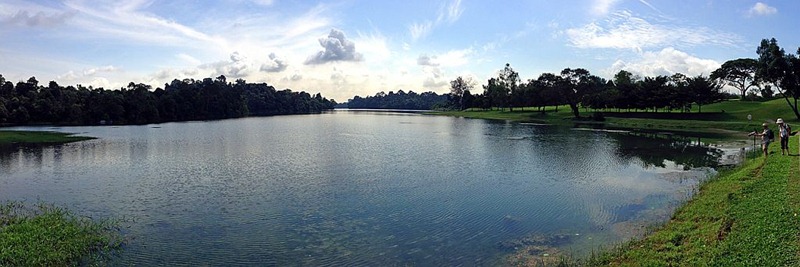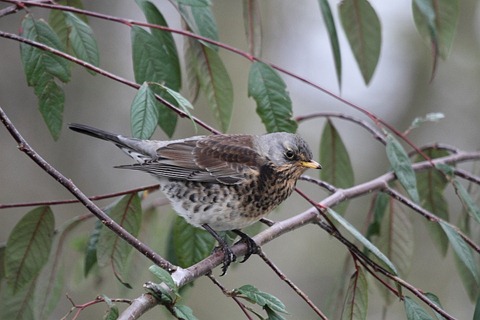As every decent IT professional knows, offsite backups of critical data are a good idea to protect against things like ones building burning down, being flooded in our increasingly wet climate or being landed on by a not-quite-passing Boeing Dreamliner. [Sorry, bad joke.] I have both belt (DVDs) and braces (external hard drive) security in place but now I wanted to fix my trousers to my shirt with Velcro, as well. Time to investigate The Cloud. Cloud storage is a bunch of remote servers out in cyberspace somewhere. It definitely qualifies as offsite.
I began investigating Cloud stuff and found myself drawing distinctions between:
- sharing data with/transferring data to other machines, be they yours or other peoples;
- synchronizing data between your own machines (i.e. desktop and laptop);
- backing up data.
Dropbox is probably the best known for #1. It’s pretty good at #2 as well but there are two features that make me dislike it for that. Firstly, you have to move the relevant files into the Dropbox folder rather than operating from your own choice of folders. Secondly, the default action is a move rather than a copy unless you hit <Ctrl> as well. I’ve lost count of the times I’ve forgotten <Ctrl> and “lost” a file on one of my machines when I was trying to copy it to the other.
I discovered SugarSync for #2 which does not require that you move files into it; it will keep a laptop and desktop in sync from, say, that childishly named location, “My Documents”. I signed up for the free account and, in theory, I can now update my Odometers (dragonfly species spreadsheets) when travelling with my laptop and once back at home [boo hoo] my desktop will get the latest updated versions – assuming the desktop is still working, of course. 😀 SugarSync’s one annoying habit seems to be bothering me with “you’ve almost used all your storage” messages when it’s only ~60% used. I don’t call 60% nearly full.
#3 is about stuffing encrypted data onto remote servers and being able subsequently to reinstate it.
Both Dropbox and SugarSync offer a limited storage free account and put your chosen data into The Cloud as well. There are a bunch of other Cloud storage services that concentrate on one or more of those aspects mentioned above and generally they offer some level of free service. If you don’t have a huge amount of data, the following freebies, in some combination or other, may serve your purpose:
That’s 34Gb without too much effort (apart from managing what’s where, of course). I’ve signed up for all of those along with Dropbox (which, like many others, gives 2Gb free) but we have 150Gb to deal with and it will grow considerably this year. For that, I needed a paying service and, after a decent-looking review, I signed up for a year’s contract with Crashplan, the Crashplan+ account of which which gives me unlimited storage for a single machine.
If you haven’t discovered the following as part of your reading, you very quickly discover it when you start using a Cloud service: getting large amounts of data into The Cloud in the first instance is a complete pain in the derrière.
I am now fortunate enough to be on a fibre optic broadband service which gives me an upload speed of ~1Mb/sec. A “regular” broadband connection offers about one third of that speed. What I don’t have, as I fortunately remembered after day 1 of initiating the backup into The Cloud, is an unlimited usage contract. During day 1, I managed to upload ~5Gb of photos. My monthly usage limit is set to 40Gb of which we only normally use ~15Gb. Fortunately, running overnight between the hours of midnight and 8:00 AM, is “free” – it doesn’t count against my 40Gb limit. The Crashplan software allows you to set times between which backup will run. Well done! Actually, I find the Crashplan software pretty darn good. I switched it to run only during in my 8-hour free overnight window. Each night I manage to upload ~ 1.5Gb. Do the maths: running every night it will take me 100 days, getting on for 4 months, to upload all our existing photos. On a “regular” broadband connection, I’d be taking the entire year that I’ve signed up for. Of course, during that 4 months, our data will actually grow, probably by quite a chunk. I could wind up constantly chasing an ever-disappearing end point.
Actually, mimedia has what looks like a neat solution to this initial load problem. They will send you, free of charge, a so-called shuttle drive which appears to be a limited usage external hard drive. You load it up and mail it back to them whereupon they load it up for you. It can be done in a few days. What a wonderfully elegant, effective solution. Here’s the catch … only if you live in America! (I didn’t find the mimedia software very friendly, either.)
It takes a potentially embarrassingly long time to sew that Velcro to the waistband of your trousers and shirt in order to give added security to the occasionally breaking belt and braces. Both my Dell machines failed in their first year and you could easily be still uploading your data into the offsite Cloud when they failed again. The amounts of data we are creating these days are huge. Unfortunately, the technological barriers to dealing with them effectively are also huge.
Worth a thought.
Technorati Tags:
The Cloud,
photography.,
computers,
backups,
data,
PCs,
Comodo,
Crashplan,
mimedia,
SkyDrive,
Google Drive,
Amazon Cloud,
SugarSync,
Dropbox
 I left and, since I was more than half way there anyway, continued to Marston Moretaine Forest Centre. I walked all the way around the wetland reserve and saw … yes, you guessed it, pretty much nothing but a brief glimpse of a constantly flying Brimstone butterfly (Gonepteryx rhamni). I did, however, jump out of my comfort zone and pause to snag what I regard as classic sign of spring, a Pussy Willow (or so my botanist informs me).
I left and, since I was more than half way there anyway, continued to Marston Moretaine Forest Centre. I walked all the way around the wetland reserve and saw … yes, you guessed it, pretty much nothing but a brief glimpse of a constantly flying Brimstone butterfly (Gonepteryx rhamni). I did, however, jump out of my comfort zone and pause to snag what I regard as classic sign of spring, a Pussy Willow (or so my botanist informs me). After a late lunch at home and with the sun still shining unexpectedly, I looked more closely at our own back garden. Given the date and the temperature today, there was much less activity than I would have expected but there were a couple of those Bee-flies zooming about and occasionally pausing long enough for a macro lens to be directed their way. Here’s a reasonable shot showing the entirely harmless, rapier like snout. Delightful, aren’t they?
After a late lunch at home and with the sun still shining unexpectedly, I looked more closely at our own back garden. Given the date and the temperature today, there was much less activity than I would have expected but there were a couple of those Bee-flies zooming about and occasionally pausing long enough for a macro lens to be directed their way. Here’s a reasonable shot showing the entirely harmless, rapier like snout. Delightful, aren’t they?

















Recent Comments